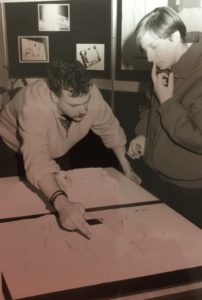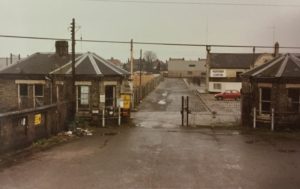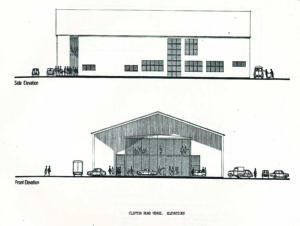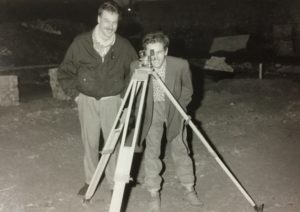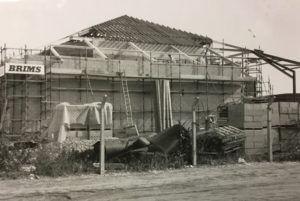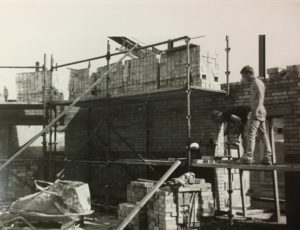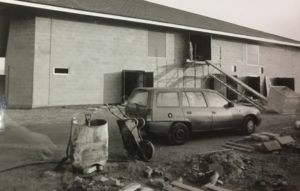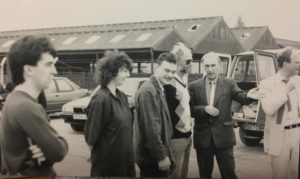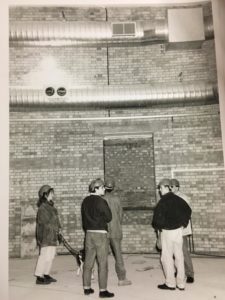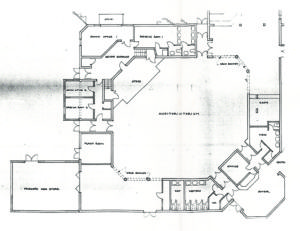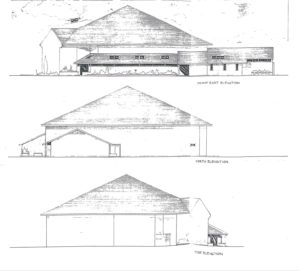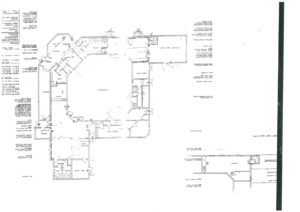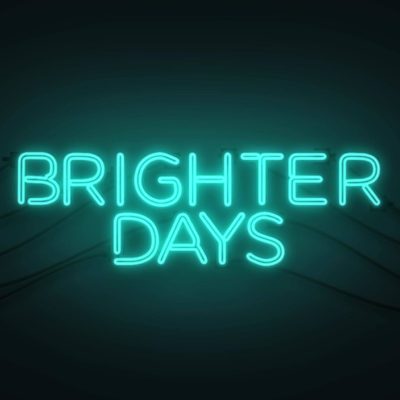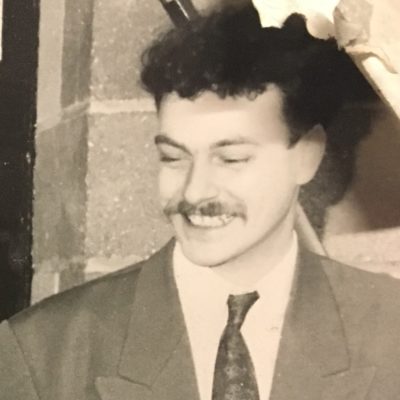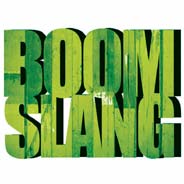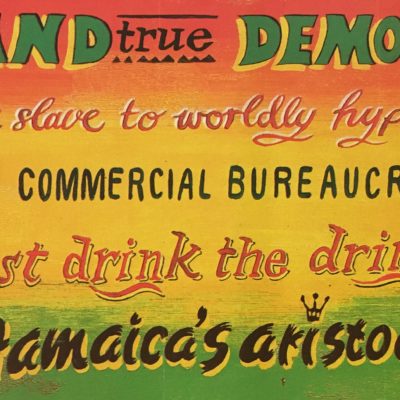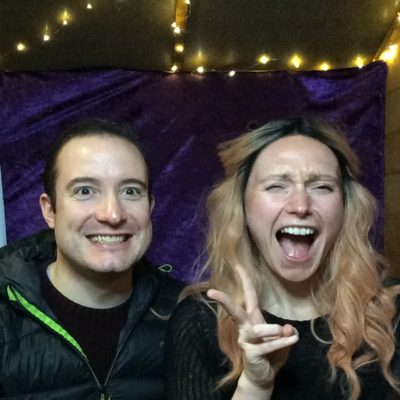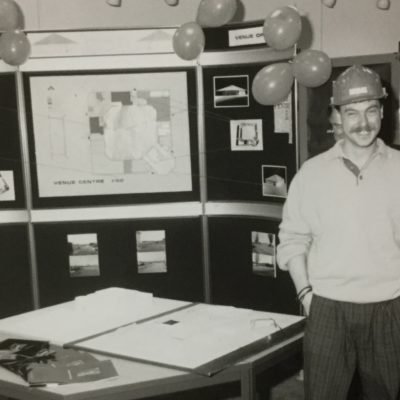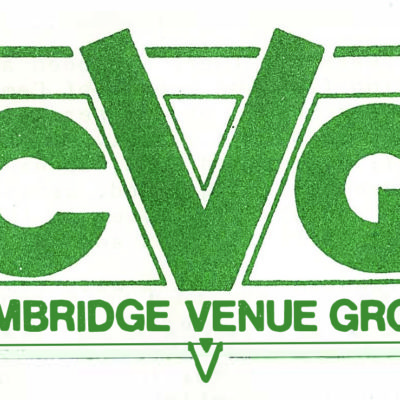Search by topic
- archaeology
- Building of Local Interest
- chapel
- charity
- church
- crime
- dressmaker
- fire
- Great Eastern Railway
- Listed building
- Mapping Relief
- medieval
- oral history
- poverty
- Public House
- Religious House
- Roman
- scholar
- school
- Then and Now
- tudor
- women
- work
- world war one
- world war two
Search by text

The Junction – Building the Buildings
By Paul Bogen, Director 1990-2007
Over its first seventeen years, The Junction went from presenting 300 events a year in a 400 capacity, strangely shaped, dark and isolated sound-proofed ‘bunker’ located on a derelict brown field site, to a 1,500 capacity arts centre presenting and producing 1,000 events a year, surrounded by leisure facilities, a hotel, restaurants and many new homes.
‘During my seventeen years as the first Director of the Junction, as well as opening it in 1990, I made four extensions to the original building and constructed Junction 2 and 3 in 2005. There is not enough room to tell all of the many stories, facts and anecdotes around the ‘building of the buildings’, so here is a potted history with a few reminisces that my fading memory can still recall.
The main consideration of Cambridge City Council when building The Junction was to keep the noise inside from getting out. Not that there was anyone living close by to hear it – except some pigs, that could be smelt if not seen via our tiny office window, while they were awaiting their fate when the old Cattle Market was still functioning.
The walls of the buildings auditorium were triple thickness, the ceiling had half a metre of concrete covering it and there were three sound proof doors between the auditorium and all of the exits. But we still had to deal with a campaign by local residents of the Cherry Hinton Road area who did not want us to obtain a late night licence. At the Magistrates court hearing, their star witness was a pensioner who lived on Cherry Hinton Road, closest to The Junction. When asked by the residents’ lawyer what he thought about lots of young people making lots of noise inside and outside of The Junction late at night he answered, “I think it’s a bloody good idea as it’s about time the young people had somewhere to go”! He became an honorary member of The Junction and helped us organise afternoon tea dances for local pensioners.
The capacity of the auditorium when we opened was only 400 because the original bar was only big enough to fit 60 people (it also had a bright purple carpet – one of my more stupid ideas!) This meant long queues for drinks. So in 1991, to increase the capacity for gigs and clubs and to make it faster and easier to get served, we enlarged the bar and added a corridor to it from the main entrance. This increased the standing capacity to 500.
But we were still selling out many gigs and clubs and as we had to earn over 80% of our income through ticket and bar sales, we needed to maximise audiences and sell a lot of beer (mainly Red Stripe). So, in 1992 we turned the technical store into a can bar and knocked the walls down between the main bar and the auditorium. This increased the standing capacity to 850, which also meant we could book bigger bands such Blur, The Manic Street Preachers and Coldplay, enabled us to host our own TV series ‘Up The Junction’ and saw annual audiences increase from 65,000 in 1990 to 100,000 in 1995.
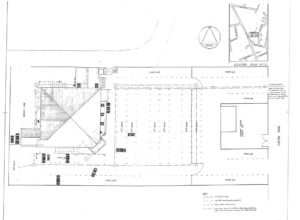
Plans for the second extension in 1992 that enlarged the capacity from 500 to 850, added the can bar, the first development of the first floor for offices, financed by a loan from Charles Wells Brewery.
The 1992 building extension also included our first development of the first floor, where we built new staff offices. At the same time as these opened we launched the first Junction web site and had our first email account – one for all of the staff with the address, spiral@junction.co.uk (named after the spiral staircase to the offices).
The Junction was one of the first UK arts organisations to have email and a web site and I remember many people saying at the time that this was a waste of money, as the Internet “would never catch on”.
In 1992 we also presented the first drive-in movies in East Anglia, which in typical Junction style were in January rather than the summer with some audiences freezing on an open top, double-decker bus and others accessing the films sound through tuning their car radios to the frequency for Radio Moscow!
In 1995 we launched a multimedia, education programme with the purchase of the first apple computer that could edit films. This enabled us to offer training workshops, which resulted in the creation of original short films by young users, called ‘Blipverts’, which were screened at art-house cinemas across the country. The UK’s first digital mural (on the front of the original building) was made by Chris Dorley-Brown and Bob Jaroc, who morphed the faces of a 1,000 Junction attenders into the ‘one face’ of The Junction audience. But we had no space to host or expand Chris and Bob’s multimedia programme and most of their work was done in one of the dressing rooms. Also, by 1997, many of our club nights were selling-out (such as Good Times, Warning and of course, Boogie Wonderland 2) and the clubbers wanted a chill-out space. So in 1998, the third extension was made to the original building with the construction of the upstairs bar, a digital studio and larger staff offices. This increased the capacity for clubs to 1,050 and by 2000; annual attendances had increased to 130,000.
My final building project was the construction of J2 (originally called The Shed) and J3 (originally called J4 as J3 was planned but never built). There was also supposed to be a first floor link between J1 and J2 above the tech store, which would have also provide office space for local artists and arts groups but we ran out of money to do this as well as for J3 (which would have been a 200-300 capacity venue for local music). The €7.5 million building project, whose main purpose was to turn The Junction into a producing as well as a presenting arts organisation, was made possible by a €5.5 million Lottery grant and included renovating and upgrading all of the original building (J1). This all finally opened in March 2005 after five long years of planning with three different architects, lobbying numerous politicians, endless negotiations with the Cambridge Leisure property developers and destroying large parts of the Amazon rain forest due to the vast quantity of paper the three-phase, Lottery application process demanded.
And, which of the five manifestations of The Junction do I have the fondest memories of and was the most fun? Well, I’ll leave you to guess!”
‘Lost Nights and Love Songs’ is a Heritage Lottery funded project celebrating 30 years of The Cambridge Junction. www.junction.co.uk/lost-nights
Contribute
Do you have any information about the people or places in this article? If so, then please let us know using the Contact page or by emailing capturingcambridge@
License
This work is licensed under CC BY-NC-SA 4.0





